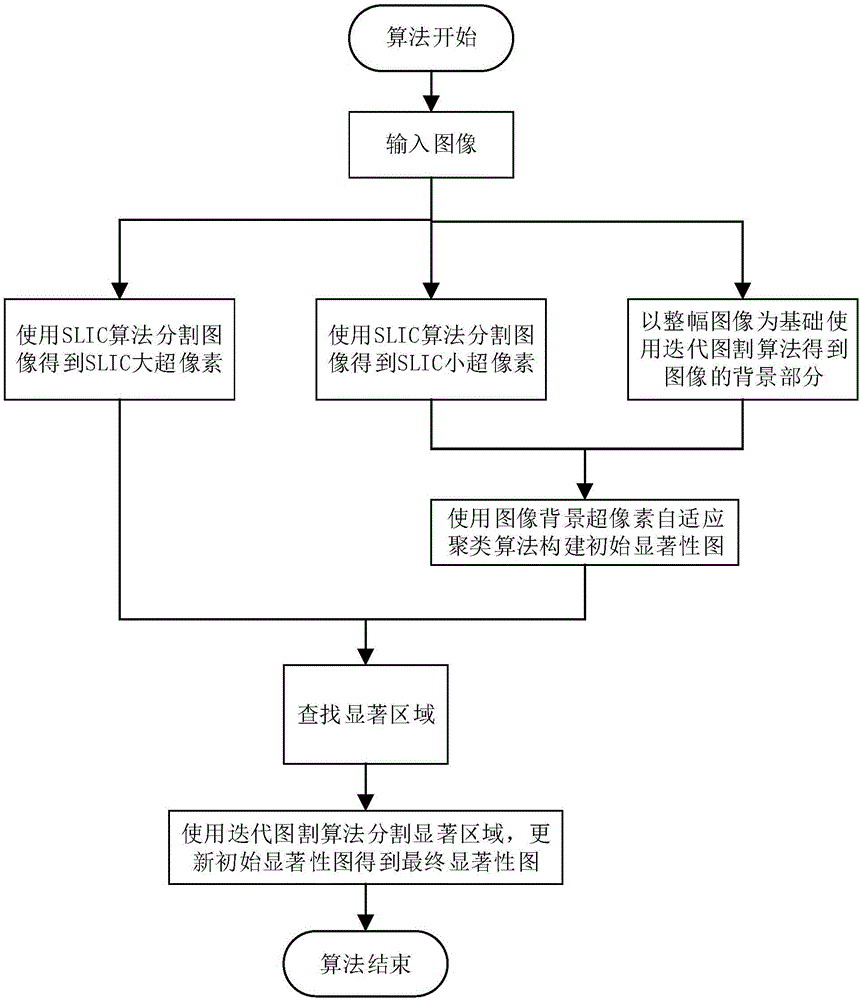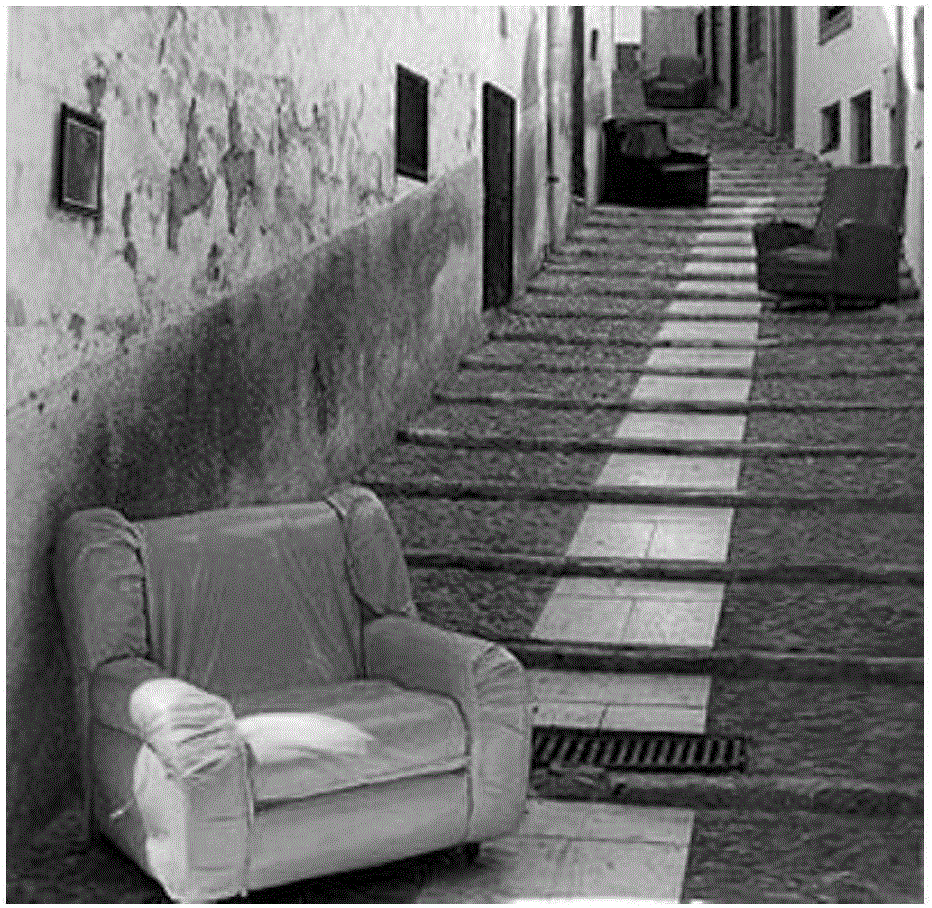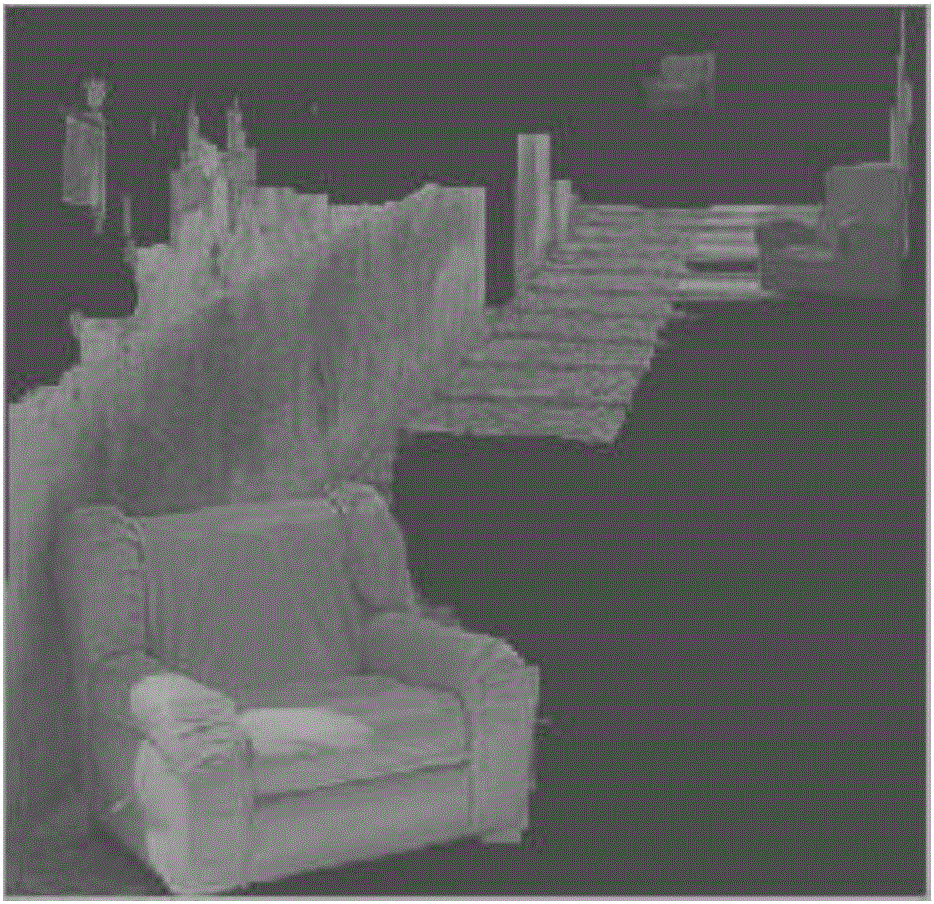Obviousness detection method based on grabcut and adaptive cluster clustering
A technology of adaptive clustering and detection method, applied in the field of image processing, can solve the problems of not being able to reflect the regionality and low calculation accuracy, and achieve the effect of reducing the amount of calculation without losing precision and high accuracy
- Summary
- Abstract
- Description
- Claims
- Application Information
AI Technical Summary
Problems solved by technology
Method used
Image
Examples
Embodiment 1
[0053] figure 1 It is a schematic flow sheet of the inventive method; Fig. 2 (a), Fig. 2 (b), Fig. 2 (c), Fig. 2 (d), Fig. 2 (e), Fig. 2 (f) and Fig. 2 (g) respectively is the input image to be detected, the background part obtained by segmenting the whole image by the iterative graph cut algorithm, the initial saliency map, the region where the salient part is located, the result of iterative graph cut segmentation of the salient region, the final saliency map and the true value. Concrete steps for realizing the present invention for accompanying drawing are:
[0054] The first step is to use the simple linear iterative clustering algorithm SLIC to segment the image to obtain SLIC large superpixels and SLIC small superpixels respectively; divide the input image into 50 superpixels to obtain SLIC large superpixels, which are used to reflect different parts of the image The regionality; the input image is divided into 350 superpixels to obtain SLIC small superpixels, which are...
PUM
 Login to View More
Login to View More Abstract
Description
Claims
Application Information
 Login to View More
Login to View More - R&D
- Intellectual Property
- Life Sciences
- Materials
- Tech Scout
- Unparalleled Data Quality
- Higher Quality Content
- 60% Fewer Hallucinations
Browse by: Latest US Patents, China's latest patents, Technical Efficacy Thesaurus, Application Domain, Technology Topic, Popular Technical Reports.
© 2025 PatSnap. All rights reserved.Legal|Privacy policy|Modern Slavery Act Transparency Statement|Sitemap|About US| Contact US: help@patsnap.com



